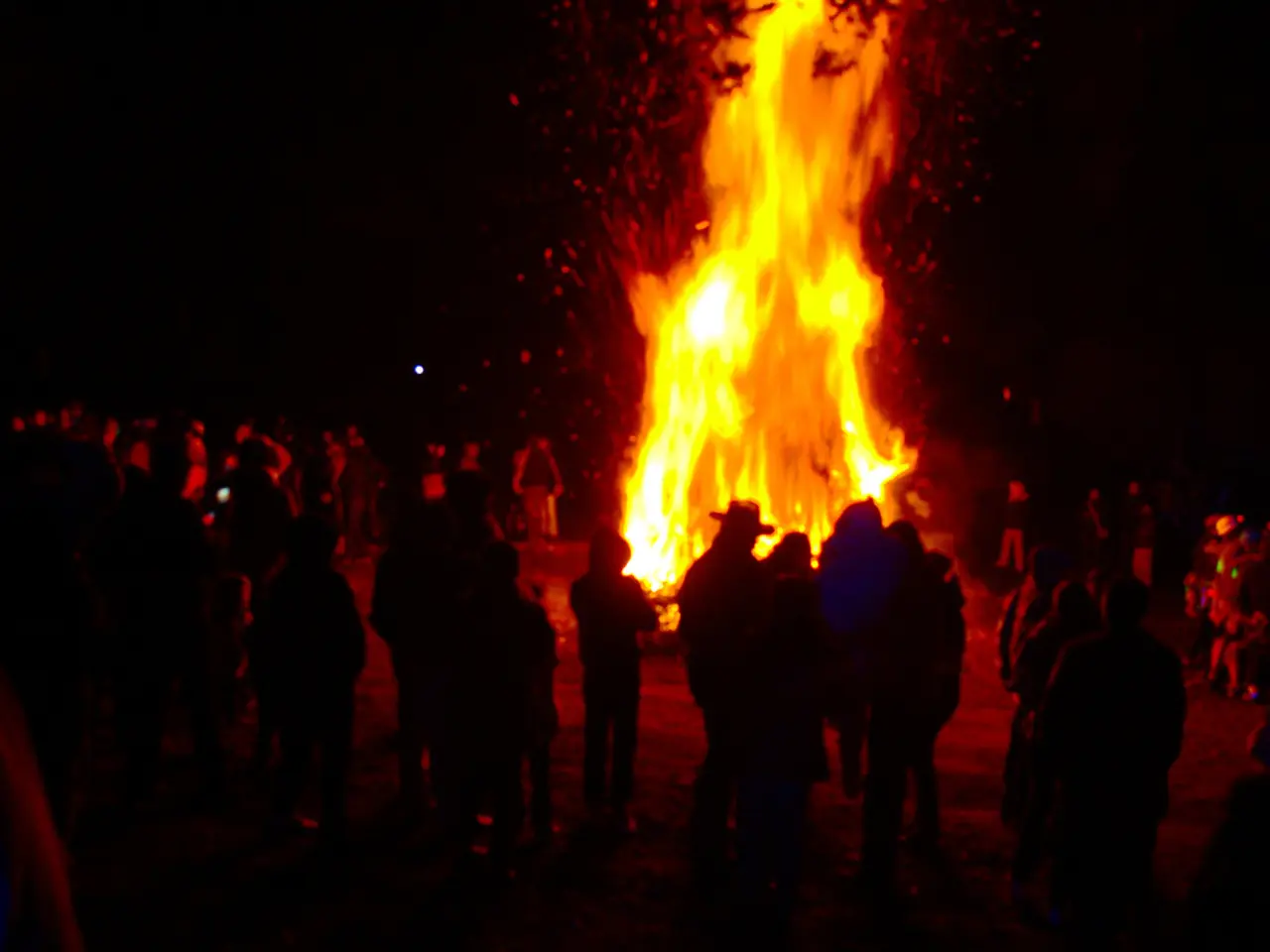Quick Response: Acting Promptly in a Fire Tornado Emergency: Steps to Follow When Caught Unexpectedly in a Fire Tornado's Path.
Fire tornadoes, also known as firenadoes, fire whirls, or fire vortices, are a rare and dangerous meteorological phenomenon that can occur during wildfires or intense blazes. Unlike traditional tornadoes that form in thunderstorms, fire tornadoes are primarily fueled by the intense heat, dry air, and energy released by the fire itself.
Characteristics of Fire Tornadoes
These spinning columns of fire and smoke can vary in size and intensity, but they pose extreme dangers due to their heat and erratic, strong winds. They are capable of lifting burning debris and embers, effectively spreading the fire. Unlike weather tornadoes, their rotation is initiated by convection from localized fire heat rather than large-scale storm wind shear.
Formation Mechanisms
Fire tornadoes form when extreme heat from the fire causes rapid upward convection of hot air. As this hot air rises, it can begin to rotate due to small-scale wind shifts or local turbulence. The fire intensifies the heat and upward airflow, stretching and spinning the air into a vertical vortex. This vortex column draws in more oxygen, feeding the fire and sustaining the rotation of flames and hot gases.
Fire Tornado vs. Traditional Tornado
| Aspect | Fire Tornado | Traditional Tornado | |-------------------|----------------------------------------|--------------------------------------------| | Formation Source | Intense heat from large fires | Rotating supercell thunderstorms (mesocyclones) | | Energy Source | Fire and heated air | Atmospheric instability and wind shear | | Rotation Cause | Convection and localized air turbulence| Wind shear tilting horizontal spin upright | | Associated Weather| Firestorm environment | Thunderstorm environment |
Safety Tips During a Fire Tornado Event
Given their rarity and unpredictability, the best safety practice is prevention through early evacuation from wildfire zones capable of generating fire tornadoes. If warned or if you are near an active wildfire area with potential fire tornado conditions, evacuate immediately. Stay away from the fire and avoid areas with heavy smoke and flying embers. Protect yourself from heat and debris by finding a sturdy shelter, ideally with a fire-resistant structure.
In emergencies like fire tornadoes, swift and decisive action is essential for ensuring your safety and the safety of those around you. If you cannot find immediate shelter, remain in your car with the windows closed and cover yourself with any available blankets or jackets to protect against heat and flying debris.
Preparation and Awareness
Increasing awareness and preparedness can help save lives and reduce the impact of disasters like fire and tornadoes. Stay informed by listening to weather alerts and monitoring local news. Remain vigilant and aware of weather conditions and potential threats in your area, and follow the instructions of emergency responders and local authorities.
Warning signs of a possible fire tornado include darkening skies, increasing winds, intense heat, swirling smoke columns, and glowing embers in the distance. In some cases, evacuation may be necessary, and having a plan in place and knowing when to move and where to go can help ensure safety during a fire tornado.
Pyro cumulonimbus clouds, also known as fire clouds, are massive, towering clouds that form above intense wildfires and can contribute to the formation of fire tornadoes. Awareness of wildfires' rapid development and fire weather conditions is critical for timely response.
Work together and support one another to build stronger, safer communities that are better equipped to face the challenges of an unpredictable world. Stay calm and seek shelter in a sturdy building or low-lying area as soon as possible during a fire tornado. Fire tornadoes can persist for much longer periods than traditional tornadoes, fueled by the ongoing heat and energy released by the surrounding wildfire.
Avoid parking near tall trees or other structures that may pose a risk of collapse during a fire tornado. Several factors contribute to the formation and intensity of fire tornadoes, including the intense heat generated by nearby wildfires, wind patterns, and terrain features.
Quick decision-making is crucial in emergencies like fire tornadoes, and having a clear plan of action in place can help ensure safety and survival. If you find yourself in the path of a fire tornado, take immediate steps to protect yourself from smoke inhalation. If you cannot find immediate shelter during a fire tornado, remain in your car with the windows closed and cover yourself with any available blankets or jackets to protect against heat and flying debris.
In emergencies like fire tornadoes, swift and decisive action is essential for ensuring your safety and the safety of those around you. If you cannot find immediate shelter, remain in your car with the windows closed and cover yourself with any available blankets or jackets to protect against heat and flying debris.
- The scientific study of fire tornadoes falls under the umbrella of environmental science, providing essential insights into the destructive forces of wildfires and climate change.
- Incidents resulting from fire tornadoes often find their way into general news, highlighting the importance of awareness, emergency preparedness, and swift action in these extreme weather conditions.
- With the rise of online platforms, sports betting might extend to more unconventional events, such as predicting the frequency or intensity of fire tornadoes during wildfire seasons, but such practice could risk trivialized the gravitas of such environmental disasters.







